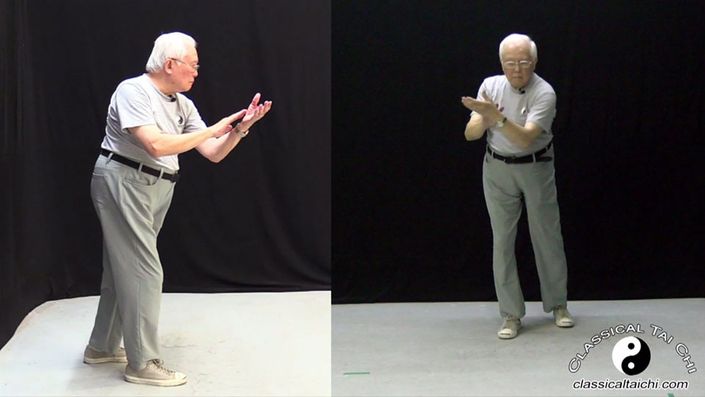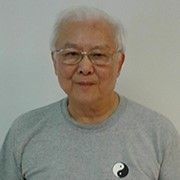
Internal Exercise for Power and Vitality
Internal Movements of Classical Tai Chi help create and maintain vigor and strength throughout life not achievable by any other exercises. This requires intense tuning and sharpening of the mind-body interaction.
Learning of the 108 Long Form Tai Chi through Classical Tai Chi Small Circle Form Instruction Part I and Part II requires dedication and patience like any endeavor.
I was asked if students could reap some of the benefits of Internal Discipline without learning the entire Long Form. I have been experimenting with the Silk Reeling movements from the Long Form, and I modified them into simple exercise routines to capture some of these benefits. These exercises have been used in my classes with good results.
Now, all these exercises are in Internal Exercise for Power and Vitality. You can easily follow the videos to practice these exercises. Explanations of these movements are included in the first half of this course, and the second half allows you to practice like any exercise video.
Internal Exercise for Power and Vitality provides basic internal move training. It should be done as a prerequisite course before starting on the Classical Tai Chi Small Circle Form Instruction Part I and II course.
This course now includes access to the WhatsApp Classical Tai Chi Group when you Enroll. This community will allow you to find others in the course to exchange experience and contact your instructor directly.
Chapter I - Explanation of the Movements
Section 1: Connecting Arm Movements with the Movement of Torso (Upper Quarter Body Movements)
This choreographically simple movement requires subtle and demanding neuromuscular control. It is the most advanced Internal Move in Tai Chi.
It is now easier to learn with this newly developed teaching methodology than ever before!
Section 2: Turning Upper Body without Moving the Hip
Turning Upper Body without Moving the Hip requires concentration in its execution. Both this and the previous moves in Section 1 generate intense internal energy which can be easily felt by the practitioner when the move is done correctly.
Section 3: Using Internal Energy in Walking (Lower Quarter Body Movement)
Changing your lifelong way of walking to learn this new style is mentally challenging. The health benefits of learning this Walk are numerous and significant-making it a very important lesson to master.
- Exercise 1: Forward and Backward Walking
- Exercise 2: Turning Move
Section 4: A combination of moves from Section 1 and Section 3
You will learn to integrate two different classes of internal moves and the resultant internal energies to achieve a more complex internal energy circulation in the body.
- Exercise 1 - Walking With -- Arm Lift
- Exercise 2 - Modified Cloud Hand
Section 5: Parting and Rotational Moves
This is a modified segment of the Tai Chi Long Form. It gives you a long, smooth and flowing sequence of movements. The movements build upon the previous sections’ teachings. The Parting and Rotational Moves are energizing and relaxing—a favorite of all my students! You will experience the exhilaration of doing the Tai Chi Form.
Chapter II - Exercise Routine
This is where you practice what you learned in Chapter I. All the previous exercises are demonstrated as an exercise routine for you to follow along with.
You will see a few videos with a split screen to show different views of the same move. The left side is easiest to follow along with the routine while the right side shows a move clarification.
Your Instructor

Dr. Stephen Hwa is the 2nd generation disciple of the legendary Tai Chi Master Wu Chien Chuan, founder of Wu Style Tai Chi. Master Hwa was fortunate to be taught the advanced “Small Circle, or Small Frame Tai Chi Form” where every movement originates from the core of the body. Because of the depth and subtlety of learning this art in addition to the early Master’s desire to pass on this art to only a few selected students, few Tai Chi practitioners now know about these exercises. Yet, the ultimate objective of learning Tai Chi is to learn the totally internal Small Frame, while other large frame exercises practiced by most Tai Chi practitioners today are simply preparatory in nature. During his forty years of practicing and teaching this art, Hwa has been able to utilize his advanced scientific training (PhD in Engineering) to deconstruct the art to come up with new teaching methods to break through obstacles in learning, so more people can learn these advanced movements quickly. He has written a book, Uncovering the Treasure: Classical Tai Chi’s Path to Internal Energy & Health, and created several online courses about Classical Tai Chi. For more information please visit classicaltaichi.com
Course Curriculum
-
PreviewSection 1: Connecting Arm Movements with the Movement of the Torso (Upper Quarter Body Movements) (9:52)
-
StartSection 2. Turning Upper Body without Moving the Hip (6:56)
-
StartSection 3. Using Internal Energy in Walking (Lower Quarter Body Movement) (25:26)
-
StartSection 4. A combination of Moves from Section 1 & 3 (10:06)
-
StartSection 5. Parting and Rotational Moves (12:11)
-
StartSection 1. Connecting Arm Movements with the Movement of the Torso (Upper Quarter Body Movements) (3:13)
-
StartSection 2. Turning Upper Body without Moving the Hip (0:41)
-
StartSection 3. Using Internal Energy in Walking (Lower Quarter Body Movement) (7:12)
-
StartSection 4. A combination of Moves from Section 1 & 3 (4:01)
-
StartSection 5. Parting and Rotational Moves (3:59)
